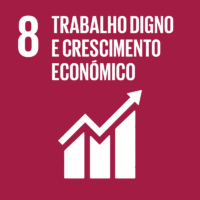Ciência-IUL
Publicações
Descrição Detalhada da Publicação
Gutenbrain: An architecture for equipment technical attributes extraction from Piping & Instrumentation Diagrams
Proceedings of the 14th International Joint Conference on Knowledge Discovery, Knowledge Engineering and Knowledge Management - KDIR
Ano (publicação definitiva)
2022
Língua
Inglês
País
Portugal
Mais Informação
Web of Science®
Esta publicação não está indexada na Web of Science®
Scopus
Esta publicação não está indexada na Scopus
Google Scholar
Abstract/Resumo
Piping and Instrumentation Diagrams (P&ID) are detailed representations of engineering schematics with piping, instrumentation and other related equipment and their physical process flow. They are critical in engineering projects to convey the physical sequence of systems, allowing engineers to understand the process flow, safety and regulatory requirements, and operational details. P&IDs may be provided in several formats, including scanned paper, CAD files, PDF, images, but these documents are frequently searched manually to identify all the equipment and their inter-connectivity. Furthermore, engineers must search the related technical specifications in separate technical documents, as P&ID usually don’t include technical specifications. This paper presents Gutenbrain, an architecture to extract equipment technical attributes from piping & instrumentation diagrams and technical documentation, which relies in textual information only. It first extracts equipment from P&IDs, using m eta-data to understand the equipment type, and text coordinates to detect the equipment even when it is represented in multiple lines of text. After detecting the equipment and storing it in a database, it allows retrieving and inferring technical attributes from the related technical documentation using two question answering models based on BERT-like contextual embeddings, depending on the equipment type meta-data. One question answering model works with free questions of continuous text, while the other uses tabular data. This ensemble approach allows us to extract technical attributes from documents where information is unstructured and scattered. The performance results for the equipment extraction stage achieve about 97,2% precision and 71,2% recall. The stored information can be later accessed using Elasticsearch, allowing engineers to save thousands of hours in maintenance engineering tasks.
Agradecimentos/Acknowledgements
--
Palavras-chave
Information retrieval,Question-answering,Piping & Instrumentation Diagrams
Classificação Fields of Science and Technology
- Engenharia Civil - Engenharia e Tecnologia
- Engenharia Eletrotécnica, Eletrónica e Informática - Engenharia e Tecnologia
- Engenharia Mecânica - Engenharia e Tecnologia
- Engenharia do Ambiente - Engenharia e Tecnologia
- Línguas e Literaturas - Humanidades
Contribuições para os Objetivos do Desenvolvimento Sustentável das Nações Unidas
Com o objetivo de aumentar a investigação direcionada para o cumprimento dos Objetivos do Desenvolvimento Sustentável para 2030 das Nações Unidas, é disponibilizada no Ciência-IUL a possibilidade de associação, quando aplicável, dos artigos científicos aos Objetivos do Desenvolvimento Sustentável. Estes são os Objetivos do Desenvolvimento Sustentável identificados pelo(s) autor(es) para esta publicação. Para uma informação detalhada dos Objetivos do Desenvolvimento Sustentável, clique aqui.

 English
English


